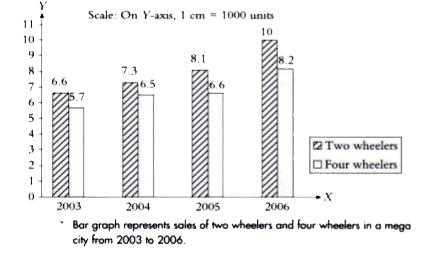_______have less irregularities which leads to less interlocking between the two surfaces, thus requiring a lesser force to break these interlock.
smooth surfaces
Rough surfaces
Plain surfaces
None of them
The correct Answer is:A
To solve the question, we need to identify the type of surfaces that have fewer irregularities, which results in less interlocking between the two surfaces. This reduced interlocking means that a lesser force is required to overcome the friction between them.
1. Understanding Surface Irregularities:
- Surfaces can be classified based on their texture. Some surfaces are smooth, while others are rough.
- Smooth surfaces have fewer irregularities, meaning they are more even and flat.
2. Interlocking of Surfaces:
- When two surfaces come into contact, their irregularities can interlock. This interlocking is what creates friction.
- On rough surfaces, the irregularities are more pronounced, leading to greater interlocking.
3. Force Required to Break Interlocking:
- The amount of force needed to break the interlocking between two surfaces depends on how much they interlock.
- For smooth surfaces, since there are fewer irregularities and less interlocking, less force is required to overcome the friction.
4. Conclusion:
- Therefore, the type of surfaces that have less irregularities, leading to less interlocking and requiring lesser force to break these interlocks, are called smooth surfaces.
Final Answer:
Smooth surfaces have less irregularities which leads to less interlocking between the two surfaces, thus requiring a lesser force to break these interlocks.
---
- Surfaces can be classified based on their texture. Some surfaces are smooth, while others are rough.
- Smooth surfaces have fewer irregularities, meaning they are more even and flat.
- When two surfaces come into contact, their irregularities can interlock. This interlocking is what creates friction.
- On rough surfaces, the irregularities are more pronounced, leading to greater interlocking.
- The amount of force needed to break the interlocking between two surfaces depends on how much they interlock.
- For smooth surfaces, since there are fewer irregularities and less interlocking, less force is required to overcome the friction.
- Therefore, the type of surfaces that have less irregularities, leading to less interlocking and requiring lesser force to break these interlocks, are called smooth surfaces.
Smooth surfaces have less irregularities which leads to less interlocking between the two surfaces, thus requiring a lesser force to break these interlocks.
Topper's Solved these Questions
- FRICTIONBOOK - PEARSON IIT JEE FOUNDATIONCHAPTER - FRICTIONEXERCISE - Track Your Learning IV
7 Videos
- FRICTIONBOOK - PEARSON IIT JEE FOUNDATIONCHAPTER - FRICTIONEXERCISE - Track Your Learning V
5 Videos
- FRICTIONBOOK - PEARSON IIT JEE FOUNDATIONCHAPTER - FRICTIONEXERCISE - Track Your Learning II
7 Videos
- FORCE AND PRESSUREBOOK - PEARSON IIT JEE FOUNDATIONCHAPTER - FORCE AND PRESSUREEXERCISE - COMPETITION CORNER
37 Videos
- HEATBOOK - PEARSON IIT JEE FOUNDATIONCHAPTER - HEATEXERCISE - CONCEPT APPLICATION Level 3
10 Videos
Similar Questions
Knowledge Check
The frictional force between two surfaces is independent of
ANature of surfaceBSize of the bodyCArea of contactDMass of the bodyWhena force resists the relative motion between two surfaces, it is called ...........
AResistanceBConvectionCFrictionDInductionWith increase of temperature the friction force acting between two surfaces .
AincreasesBdecreasesCremians sameDmay increase or decrease
Sliding friction acting between two surfaces is always less than static friction acting between the same two surfaces. Why?
View SolutionWrite any two activities which require less than one bucket of water.
View SolutionCan the optical length between two points even be less than the geometrical path between these points?
View SolutionWhat do we call those particles which have more or less electrons than the normal atoms ?
View Solution
In which year the difference between sales of two wheelers and four wheelers is less?
View Solution
